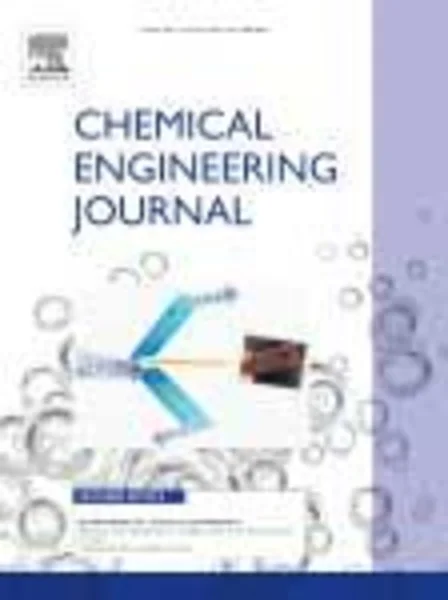-
synthesis, characterization and application of bismuth and boron co-doped tio2: a visible light active photocatalyst
جزئیات بیشتر مقاله- تاریخ ارائه: 1392/01/01
- تاریخ انتشار در تی پی بین: 1392/01/01
- تعداد بازدید: 732
- تعداد پرسش و پاسخ ها: 0
- شماره تماس دبیرخانه رویداد: -
bismuth and boron co-doped tio2 nanoparticles were successfully prepared by a modified sol–gel method. the products were characterized with various spectroscopic and analytical techniques to determine their structural, morphological, light absorption and photocatalytic properties. the results reveal that all the samples consist of highly crystalline anatase with mesoporous structures. the experimental results further indicate that bi and b species have been doped into the crystal lattice of tio2 with bi substituting ti in the form of bi3+ and b doped in the form of substitutional and interstitial b. the presence of bi species facilitated the incorporation of b into the crystal lattice of tio2. xrd and tem analysis show that all the dopants (b and bi) have the ability to inhibit particle growth of anatase tio2 with more inhibition exhibited by bi. compared to pure tio2, b and bi singly doped tio2; bi–b co-doped samples showed better activities for degradation of acid orange 7 (ao7) and 2, 4-dichlorophenol under visible light irradiation. the highest activity is observed for 3% bi–b–tio2 calcined at 450 °c. the superior performance of this sample is ascribed to the high surface area, ability to absorb in visible light, efficient charge separation as well as improved e− transfer associated with the cooperate effects of appropriate amounts of b and bi in co-doped sample. bi species are found to play a pivotal role in the co-doped samples. superoxide radicals are the most reactive species in degradation of ao7 over 3% bi–b–tio2 under visible light irradiation.
مقالات جدیدترین رویدادها
-
استفاده از تحلیل اهمیت-عملکرد در ارائه الگوی مدیریت خلاقیت سازمانی و ارائه راهکار جهت بهبود
-
بررسی تاثیر ارزش وجوه نقد مازاد بر ساختار سرمایه شرکت های پذیرفته شده در بورس اوراق بهادار تهران
-
بررسی تأثیر سطح افشای ریسک بر قرارداد بدهی شرکت های پذیرفته شده در بورس اوراق بهادار تهران
-
بررسی تأثیر رتبه بندی اعتباری مبتنی بر مدل امتیاز بازار نوظهور بر نقد شوندگی سهام با تأکید بر خصوصی سازی شرکت ها
-
تأثیر آمیخته بازاریابی پوشاک ایرانی بر تصویر ذهنی مشتری پوشاک ایرانی (هاکوپیان)
-
تحلیل فضایی زیر ساخت های گردشگری استان گیلان با رویکرد توسعه پایدار
-
(بررسی پایداری در معماری میدان نقش جهان اصفهان)
-
مدیریت برنامه ریزی و توسعه سواحل مکران با تاکید بر راهکارهای کاهش مخاطرات ناشی از سونامی
-
رعایت اصل حریم در طراحی مسکن معاصر
-
a comparison between standing wave pattern in front of vetical breakwater with horizontal and sloped-bed
مقالات جدیدترین ژورنال ها
-
مدیریت و بررسی افسردگی دانش آموزان دختر مقطع متوسطه دوم در دروان کرونا در شهرستان دزفول
-
مدیریت و بررسی خرد سیاسی در اندیشه ی فردوسی در ادب ایران
-
واکاوی و مدیریت توصیفی قلمدان(جاکلیدی)ضریح در موزه آستان قدس رضوی
-
بررسی تاثیر خلاقیت، دانش و انگیزه کارکنان بر پیشنهادات نوآورانه کارکنان ( مورد مطالعه: هتل های 3 و 4 ستاره استان کرمان)
-
بررسی تاثیر کیفیت سیستم های اطلاعاتی بر تصمیم گیری موفق در شرکتهای تولیدی استان اصفهان (مورد مطالعه: مدیران شرکتهای تولیدی استان اصفهان)
-
تعیین و تشخیص مؤلفه های ارتقای کیفیت آموزش و بالندگی مدیران شهرداری تهران
-
تصمیم گیری مبتنی بر خط مشی گذاری عمومی
-
راهکارهای قانونی و شرایط بهره مندی از بیمه ی طلاق
-
جبران خسارت های شغلی متهمین بی گناه در نظام جزایی ایران
-
estimating the first-year corrosion losses of structural metals for continental regions of the world




سوال خود را در مورد این مقاله مطرح نمایید :